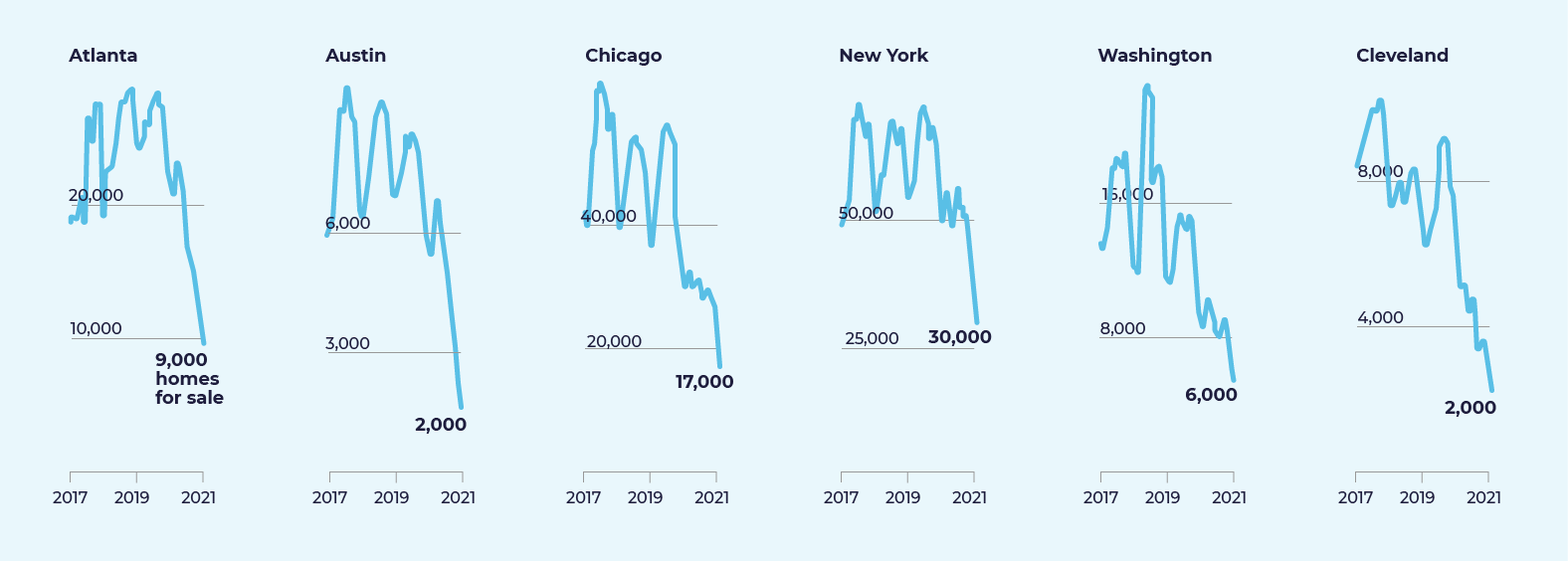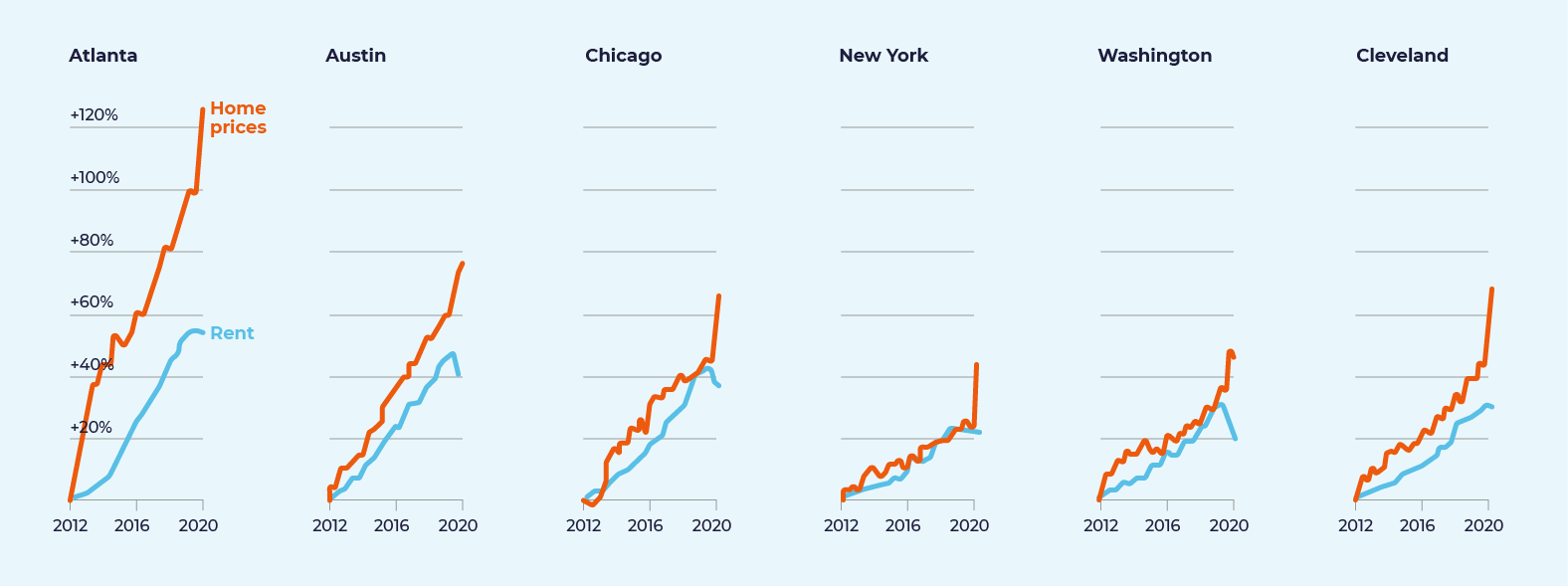The State of Moving in 2021
Every year millions of Americans pack up their lives and move to new states, new cities and new homes. Learn how people moved—or didn’t move—across the U.S. in the annual State of Moving report, presented by SmartMove.
2020. The Year We Stayed Home. Kind Of.
With government shutdowns and stay-at-home orders in place due to COVID-19, plans to move were either postponed or sped up. But with record low mortgage rates, 2020 turned out to be excellent circumstances to move for some.
So, what was the state of moving last year? We surveyed over 2,000 adults online in the United States who, at the start of 2020, intended to move - to see how COVID impacted their moving plans. Let’s look at the numbers to see what happened and what forecasters are predicting for 2021.

Over 15.9 Million People Have Moved During the Pandemic
The United States saw nearly a 4% increase in total moves last year, according to the USPS national change of address filing from 2019 to 2020.
Permanent moves increased 2% and temporary moves grew to a whopping 27%.
Source - Mymove.com
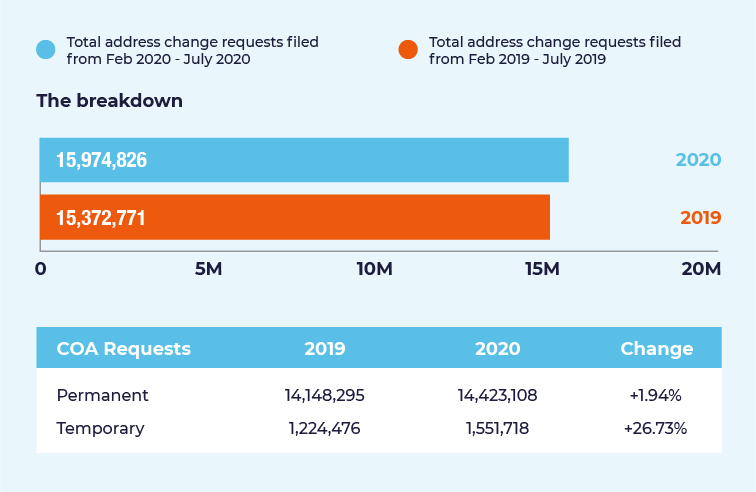
78.3% of people stayed put during the pandemic
Citing delays due to COVID-19 and other concerns including job loss and stay-at-home orders (in addition to not having a scheduled move on the books), most people chose not to move in 2020.
Urban millennials fled to the suburbs
People living in urban areas most impacted by the coronavirus were more likely to head to the suburbs. According to a New York Times article, many of those people included millennials with children who left for more space and safety reasons.
Gen Xers stayed put
With a significant portion already living in suburban areas and for those in the group who don’t have children, most Gen Xers opted not to move last year.
Here is a detailed breakdown of the populations who were planning to move and did and who were planning to move an did not.
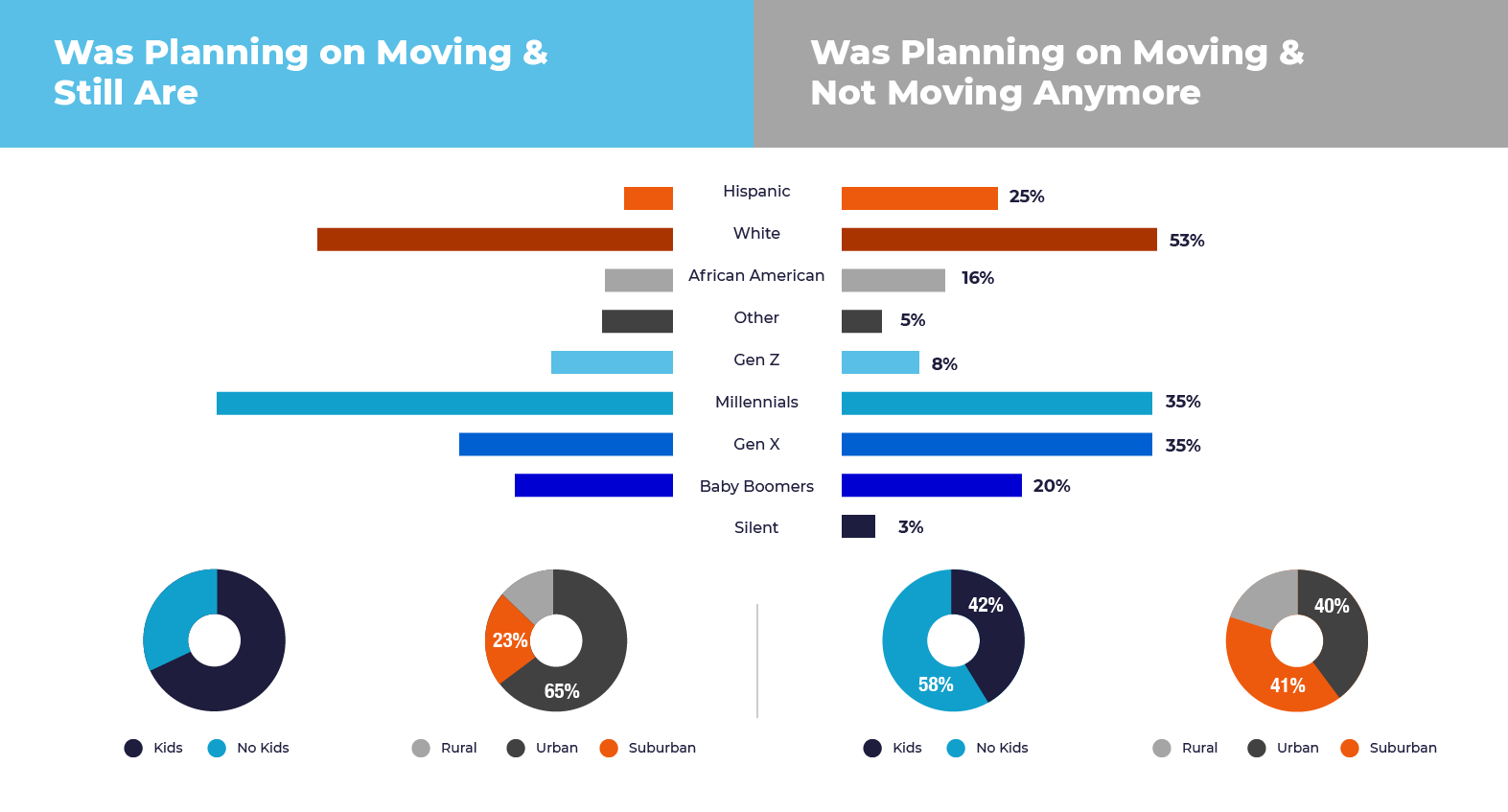
Source - COVID-19 Impact on Moving Round 2 - May 2020
Top reasons people decided to move
For those who decided to continue with their moving plans last year, there was one very clear reason why: COVID-19. A Pew Research Center study looked at almost 10,000 adults to understand moving trends in June 2020.
Top reasons people decided not to move at the beginning of the pandemic
Top reasons people didn’t move later in the year (November, 2020)
Where did people move to?
Based on our data, more than half of movers intended to stay in the same city or state, while a quarter of individuals planned to make a bigger move, several states away.
Source - COVID-19 Impact on Moving R2
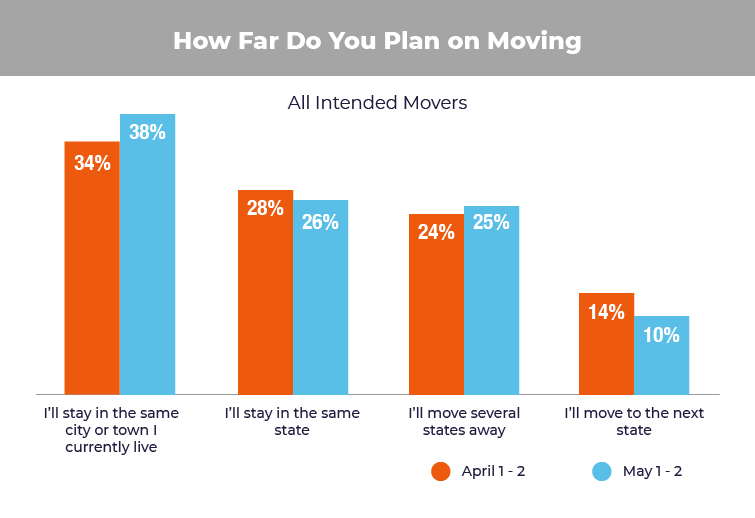
Did movers take advantage of low interest rates?
While movers mostly decided to stay close to home, many decided to take advantage of the lower mortgage interest rates and purchase a home. Depending on where they moved to, their ownership journey took a new path.
- 58% of people moving to a new state were planning to go from renting to owning
- 49% of people moving within the same state planned to remain renting
- 32% of all movers were moving from a property they own to buying another property
Source - COVID-19 Impact on Moving R2
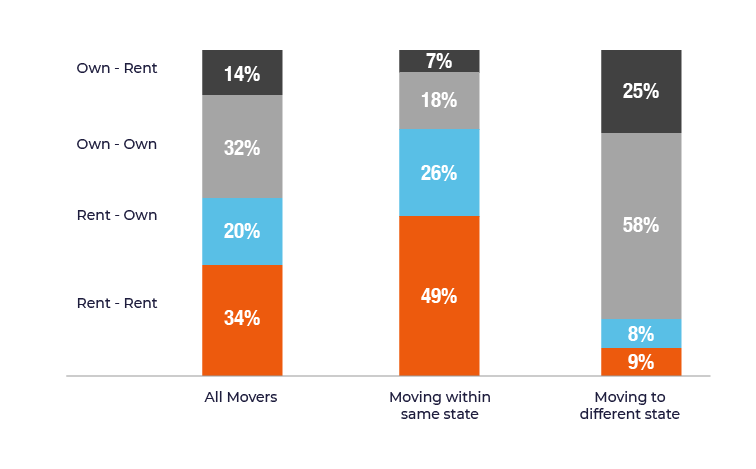
Service changes after moving
With the country at home, many people turned to TV and streaming for entertainment. After moving, more decision-makers chose to increase streaming at the expense of cable and satellite.
Amongst movers, streaming increased from 38% (in 2019) to 42% (in 2020). Both sellers and buyers did well in 2020. Median home sale prices surpassed $300,000 for the first time ever and mortgage rates hit record lows. Some experts expect an even better housing market in 2021.
Source - Q2 2020 Movers Tracking Study Report
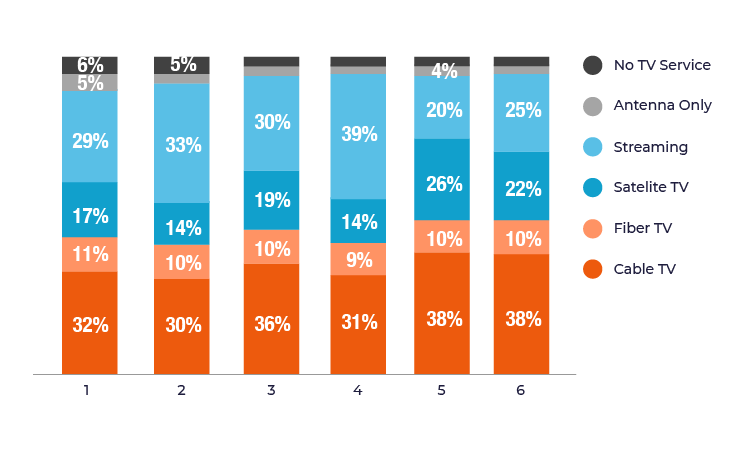
Predictions for 2021
What similar patterns can we expect to see?
Historically low mortgage rates, but not enough houses
Mortgage rates are expected to remain at a historical low. Home prices will rise, but at a slower rate than in 2020. New home sales will increase, but not enough to meet demand.
If you are currently looking for a house, you will only see about half as many homes as were available last winter. The number of homes has fallen steeply in major cities.
Source - NYTimes.com
Economic trends
Housing starts (an economic indicator that refers to the number of privately owned new houses on which construction has been started) for single-family homes grew last year and are predicted to grow even more in 2021.
Source - NAAHQ.org
Rents and home prices have diverged
Home prices and rental prices typically follow the same economic path because they respond to the same economic conditions. At this moment in time, some metro areas are seeing home prices and rents completely diverge. Home prices are surging while the cost of renting is falling, which may be a sign of a housing bubble inflating.
Source - NYTimes.com
What will be different?
TL;DR - State of Moving 2021
While 2020 was the year of stay-at-home, that did not deter people from their planned moves, and others were even prompted to move because of the pandemic. Based on our survey, we learned that the state of moving in 2020 was:
- Millennials with kids were more likely to move away from urban areas
- Gen Z and Baby Boomers decided to halt travel plans
- The majority of movers decided to stay in the same city and continued renting or owning
- People moving to another state took advantage of the low interest rates and bought a new home
- Movers relied on streaming services over cable and satellite TV
Experts predict that 2021 will be another big year for moving with even more individuals and families looking to buy homes and with an entirely new approach to doing so.
If you’re one of the people who plans to move in 2021, be sure to move with the help of SmartMove. SmartMove is proud to be here to help you every step of the way.


